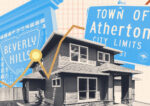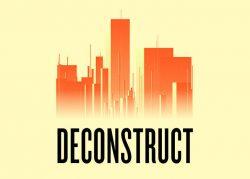Slightly more than half of Californians own a home, the third-lowest rate of ownership in the nation.
The share of Californians living in a house they own didn’t budge during the pandemic, despite historically cheap mortgages and a feeding frenzy for houses, the Orange County Register reported.
The newspaper found that 54.8 percent of Californians this year live in a home they own, ranking the state third lowest in the nation, according to U.S. Census Bureau homeownership stats and Zillow home value indexes.
The share of home ownership was the same in 2019, the year before the pandemic.
Ownership in California wasn’t universal. Progress was found inland, where house hunters sought relative bargains. Declines were found on Southern California’s coast.
Of the state’s 75 most-populous urban areas, three-year gains were seen in Fresno (52.3 percent ownership, up 5.3 percent), San Francisco (55.5 percent ownership, up 2.7 percent), Sacramento (64.3 percent ownership, up 1.8 percent), the Inland Empire (65.2 percent ownership, up 1.5 percent) and San Jose (52.7 percent ownership, up 0.1 percent), according to the Register.
Ownership fell in Los Angeles and Orange counties (47.7 percent ownership, down 0.5 percent), and San Diego (50.7 percent ownership, down 5.2 percent).
Only 11 states fared worse over three years that saw the coronavirus rock the economy and housing market.
The highest rate of home ownership this year is in West Virginia at 78.4 percent, followed by South Carolina at 75.8 percent, Maine at 75.4 percent, Iowa at 75.1 percent and Wyoming at 74.8 percent, according to the Register.
The lowest rate is in the District of Columbia at 43.1 percent, followed by New York at 54 percent and California. They were followed by Hawaii at 59 percent and Nevada at 59.6 percent.
In comparison, Texas was No. 45 at 63.5 percent and Florida was No. 28 at 67.9 percent.
Homeownership rates dropped in 11 states, which added 1 million residents during the pandemic’s first two years, a 1.9 percent increase – compared to the nation’s 1.1 percent population growth overall.
The downers include Ohio (decline of 1.7 points to 66.5 percent), followed by Tennessee (off 1.6 points to 67.2 percent), Montana (off 1.1 points to 67.7 percent), Utah (off 1 point to 70.8 percent), Hawaii (off 1 point to 59 percent), New Jersey (off 0.9 points to 64.1 percent), Connecticut (off 0.7 points to 63.6 percent), Massachusetts (off 0.5 points to 60.8 percent), Oklahoma (off 0.5 points to 68.4 percent), Kansas (off 0.4 points to 68.8 percent), and New Hampshire (off 0.3 points to 74.7 percent).
The 11 states with the biggest ownership gains added only 412,000 residents or 0.9 percent growth.
The gainers include No. 1 Iowa (up 5.5 percentage points to 75.1 percent), followed by Wisconsin (4.3 points to 70.4 percent), Louisiana (up 4.3 points to 69.9 percent), Maryland (up 3.7 points to 72.4 percent), and Wyoming (up 3.5 points to 74.8 percent).
In the 11 states where ownership dropped since 2019, home values averaged $427,000 this year compared to $307,057 in the 11 biggest gainers — a 40-percent price gap.
— Dana Bartholomew
Read more


